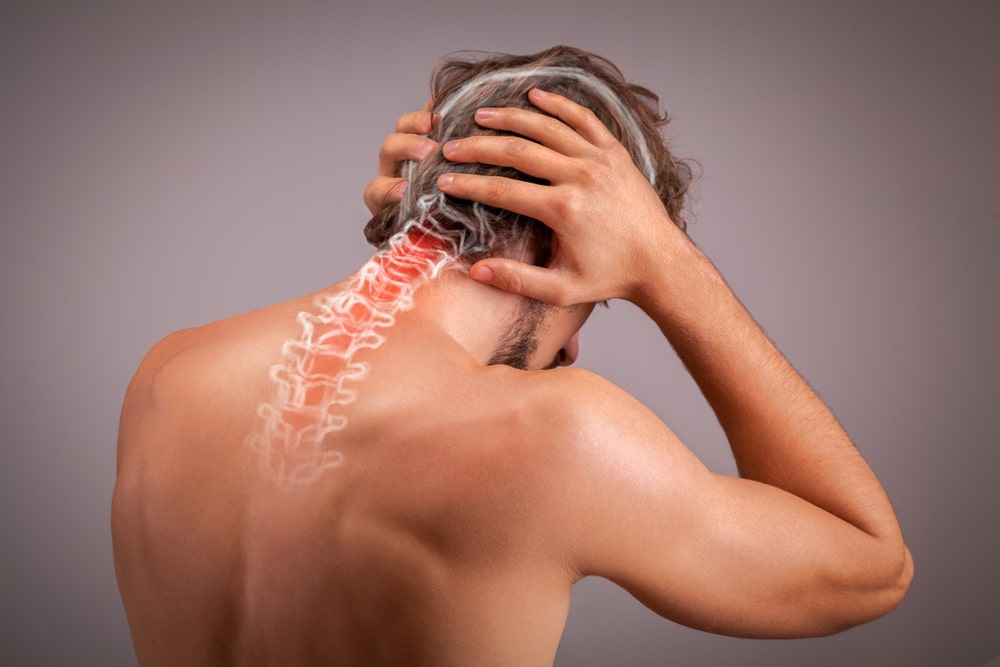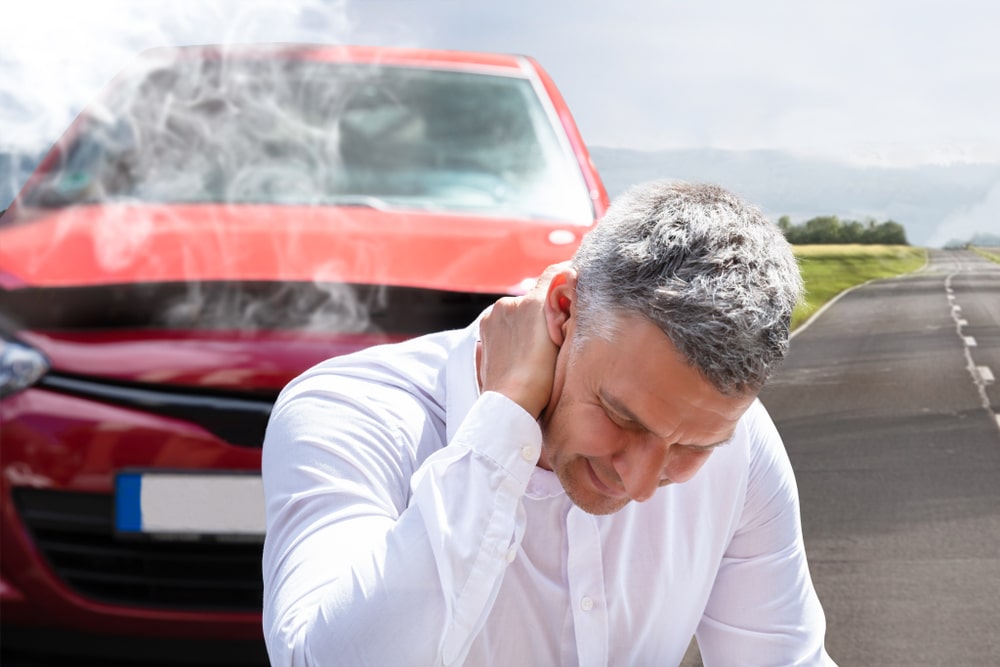Have you recently been involved in a motor vehicle accident resulting in neck pain? You may have a condition called Whiplash Associated Disorder (WAD). This condition is very common following vehicle collisions, but it may also occur during sporting activities, physical altercations or even falls.
Imagine a snowboarder on a busy mountain near Calgary at the end of the day. They are exhausted when a child darts in front of them, causing them to catch the back edge of their board and then faceplant into the snow. The snowboarder has an instant wounded ego and hours later also developed neck pain and a headache. This mechanism of injury is called whiplash, and it’s the same mechanism that causes many cases of neck pain following car accidents.

Whiplash Associated Disorder Explained
What is Whiplash Associated Disorder?
Whiplash associated disorder is the term used to describe an acceleration-deceleration mechanism of energy transfer to the neck, resulting in a collection of neck symptoms. WAD may be classified based on the severity of these symptoms. The classifications include:
- Grade 0: No complaints about the neck or physical signs.
- Grade I: Complaints of neck pain, stiffness or tenderness. No physical signs.
- Grade II: Neck complaint and musculoskeletal signs.
- Grade III: Neck complaint and neurological signs.
- Grade IV: Neck complaint and fracture or dislocation.
For example, if you have neck pain and are unable to rotate your neck side to side more than 45 degrees you would be classified as a WAD II. If you have neck pain and normal neck rotation you would be classified as a WAD I.
What are the Symptoms?
There are numerous symptoms that may present with Whiplash Associated Disorder including, but not limited to:
- Neck pain
- Suboccipital headaches
- Neck stiffness
- Loss of balance
- Concentration and memory problems
- Anxiety
- Sleep disturbances
- Tinnitus
- Malaise
- Dizziness
Symptoms may vary depending on the person and the severity of the injury. Whiplash Associated Disorder often happens in combination with back pain and peripheral joint injuries. It is important to be assessed following a motor vehicle accident by an appropriate health care practitioner such as a doctor or physiotherapist. They will be able to assist you in symptom diagnosis and evidence-informed treatment based on their thorough assessment findings.
What will Rehabilitation look like?
The first step to a successful rehabilitation program is finding a knowledgeable physiotherapist to work with. This physiotherapist will guide you through your recovery process. They will create a personalized program that fit your unique needs, goals and lifestyle. A good rehabilitation program will consist of education, active exercise, and advice regarding return to activities. Treatment will often include manual therapy techniques such as soft tissue massage or joint mobilizations, and modalities like Transcutaneous Electrical Nerve Stimulation, heat or ice to help ease the pain. Subject to your feedback and injury response, your physiotherapist will modify and progress your treatment plan. They may also refer you to other health care providers, such as a psychologist if further interventions are required. Car accident recovery involves the collective effort of a multimodal health care team to help educate and support you. However, you should be at the forefront of decision making.
If you have recently been in a car accident or have sustained a whiplash injury, similar to the snowboarder in the prior story, then physiotherapy could be for you. We are here to help you manage pain, move better, and live a healthier, happier life.
Full disclosure; the snowboarder was me.
Written by: Kirsten Holte, MScPT
References: Pastakia, K., & Kumar, S. (2011). Acute whiplash associated disorders (WAD). Open access emergency medicine: OAEM.





